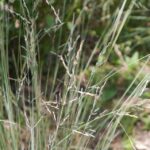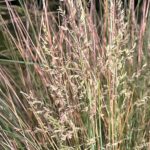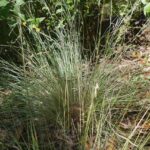Gardening with Indigenous Plants
Indigenous Plant Use
Identification & Control of Common Weeds
| Botanical Name: | Poa labillardierei |
| Common Name: | common tussock-grass, river tussock, river tussock grass |
| Sold As: | Tube ($2.00) |
| Plant Type(s): | Grass, Grass Like / Strappy, Bird Attracting, Butterfly Attracting, Insect Attracting, Popular (bulk), Nature Strip |
| Growing Conditions: | Full Sun, Partial Shade, Shade
Dry, Moist, Well Drained |
| Size (HxW): | 30-80 cm (stems to 1.2 m) x 60-80 cm |
| Foliage: | Green, greyish-green or blue-green slender, rough leaves to 80cm x 1-3.5mm |
| Flowers: | Green, purple to straw-coloured open flowerheads to 25cm held on erect stems. Flowers from October to February. |
| General Comments: | Large, coarse densely tufted tussock with radiating roots. Water during warmer months whilst becoming established. It can grow in clay loam, heavy clay, loam, sandy loam and sandy clay loam of medium to high fertility, preferring moist to slightly dry soils. A vigorous and hardy grass with many forms, commonly used in landscaping. Useful for erosion control, mass planting in drifts or to add vertical interest to a garden. Colour may change with season or age. Frost tolerant. Frog habitat, food plant for caterpillars and birds like the seeds, habitat and use it for nesting materials. |
 Further Information: |
|
| Plant Propagation: | Poa labillardierei can be propagated by division and germinates readily from seed, into prepared soil in autumn and winter. The seedlings cannot grow in an area of continuous dry climate and needs moist soil to establish. |





